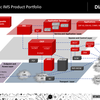
Softswitches, once bastions of the “new” IP telecommunications environment, are now regarded as legacy equipment in some circles. Replacements to full IP multimedia system (IMS) environments are still in full swing, but that takes capital and operational expenditures (CAPEX and OPEX). Upgrading your old softswitch to a modern one can be a better way to go for many carriers. Why? First of all, newer switches will be able to connect you to the modern networks – even IMS networks – so you won’t have to undergo a forklift upgrade to one. Plus, architecture improvements will enable you to deploy a highly available switch. Newer switches will save you both space and power compared to your older retired switch, and you can extend your networks for many years, thereby reducing your CAPEX and OPEX.
Here are five considerations for upgrading your legacy switching:
1. What do you want to get out of the upgrade? Is your current switch end-of-support but still functional? Or do you expect the switch to connect to IPv6 networks and handle 3G and LTE traffic, with HD Voice codecs and potentially WebRTC codecs? You may be able to keep your current gateways and just replace the switch. Understanding and planning for future requirements now may save you money and headaches later on.
2. How important is high availability? System redundancy today is built better than 15-year-old technology. Geographic redundancy is also more important now than it was 10 or 15 years ago, with many service providers offering at least some kind of global coverage. Again, building this into the solution now will save you time and money later.
3. What is your current routing strategy? Today, there are more efficient least-cost routing schemes, such as dynamic least-cost routing, which can support tens of millions of routes and quickly load more advantageous, higher-margin routes.
4. What operations and business support system (OSS/BSS) platform will you use? Does your new switch integrate with it? Just because you are upgrading your switch doesn’t mean you will need to change your OSS/BSS platform, but make sure to take this into account during your migration and testing phase so that you can migrate forward, as opposed to having to roll back to where you were.
5. Who are your vendors? Can they offer you the support and services you need? Can they help you manage the transition? You’ll need a team that can recommend the correct sequence of events and determine which customers should start migration first. Planning upfront will make the whole process smoother and yes, save you time and money later.
6. How important is internetwork packet exchange (IPX) to you? If you are in the interconnect business and want to move mobile traffic, you want to make sure your switch supports IPX. (I know I told you I was only going to share five considerations. Consider this one a bonus.)
Technology is shifting toward more full IP networks, but that doesn’t mean you have to forklift upgrade now. Since you are upgrading your switch, you should consider how long you will need it, as understanding future requirements now will—you guessed it!—save you time and money later on.
Ready to switch your switch? The Dialogic team is here to help. Get in touch today.












